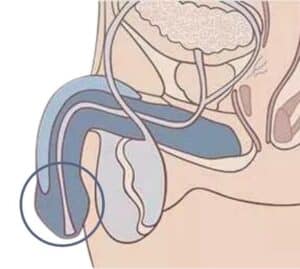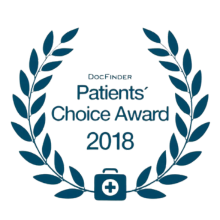CIRCUMCISION
(CIRCUMCISION) IN VIENNA
Circumcision in men is the complete or partial surgical removal of the foreskin of the penis for medical, aesthetic or religious reasons.
The most important facts about circumcision
- Result: After 2-4 weeks
- Recovery time: 1-2 days
- Ability to work: Office work after 1-2 days
- Pain: Low
- Sport, sexual intercourse, full baths: 4 weeks break
- Cost of circumcision: € 2.190,-
Consultation with Dr. Roland Resch
Feel free to book a consultation with Dr. Roland Resch
Dr. Roland Resch
Experienced specialist in the field of circumcision
Circumcision in men is the complete or partial surgical removal of the foreskin of the penis.
It is estimated that around 33% of the world’s male population is circumcised. Partly for religious or cultural reasons, partly out of medical necessity. This procedure is relatively minor and is usually performed under local anesthesia and on an outpatient basis.
I would be happy to advise you on this in a personal appointment.
Yours, Dr. Roland Resch
Male circumcision for medical, aesthetic or religious reasons
In addition to medical reasons, circumcisions are also performed for aesthetic, religious, hygienic and cultural reasons.
Medical reasons for circumcision
Too tight foreskin (phimosis): when the foreskin is too tight and can only be pulled back over the glans with difficulty. A foreskin that is too tight can be congenital or caused by an infection. This leads to pain during sexual intercourse or makes it completely impossible and can lead to repeated inflammation. A foreskin that is too tight also makes appropriate intimate hygiene difficult or impossible. In some cases, it is also sufficient to make one or two incisions to give the foreskin more space, but in most cases a complete circumcision is performed.
Other complications caused by a foreskin that is too tight (paraphimosis): If your foreskin is too tight and you still pull it back over the glans, it may not be possible to push the foreskin back over the glans - especially if you have an erection. This condition often requires immediate medical attention. This is a painful condition which, if left untreated, can lead to serious complications, including the death of parts of the penis. If this condition occurs repeatedly, circumcision is unavoidable.
Circumcision-combination with other interventions
In adults, a combination with penis enlargement is possible.
Penis shaft thickening cannot be performed at the same time.
General inflammation of the penis or glans and the part of the foreskin that lies directly against the glans, caused by a bacterial or fungal infection (recurrent balanitis). This is usually accompanied by pain during sexual intercourse.
Shortened foreskin frenulum: For some men, the problem is not the narrowing of the foreskin, but the shortening of the foreskin frenulum. During an erection, there is not enough room for maneuver and pain occurs, especially during sexual intercourse. Sometimes intercourse is not possible due to pain. The frenulum of the foreskin often tears during sexual intercourse or masturbation, which can lead to heavy bleeding. In this case, circumcision can often be dispensed with and only the foreskin frenulum is cut.










Guide to circumcision - The path to your new self
It is very important to me to support you in your decision by providing comprehensive information. In addition, a trusting relationship with your doctor is always beneficial.
Our procedure for operations
Arrange a consultation
Simply book an appointment online via "Arrange consultation" or by phone +43 1 417 05 05. We are happy to get in contact with you.
Talk to Dr. Roland Resch
At your first consultation you will be thoroughly informed about the procedure you are planning to go through. We will answer all your questions. You will take home all the documents needed concerning your treatment.
Take your time
Take your time to think it over and read the documents we provide about your planned procedure. A reflection period of about 14 days is recommended for most procedures.
2nd consultation
In a second appointment we go through all aspects of the procedure again, and I will be happy to answer all your questions.
Operation
If you decide to have the procedure, we will find a suitable date for you.
Make an appointment
Dr. Roland Resch is available for a personal consultation by appointment!
3 steps of a circumcision
Anesthesia for circumcision
Surgical removal of the foreskin is performed under local anesthesia. If desired, the procedure can also be performed under twilight sleep or general anesthesia.
Method of circumcision
Circumcision involves the surgical removal of the foreskin.
A distinction is made between complete and partial circumcision.
Complete circumcision: this involves the complete removal of the skin covering the glans when it is not erect. The corresponding inner foreskin leaf is also removed. The wound edges are sutured. This is also the usual procedure for foreskin constriction.
Partial circumcision: Sometimes circumcision is only performed partially. The parts of the foreskin that cover the glans when the penis is not erect are preserved.
Aftercare and recovery after a circumcision
You may go home the same day after the procedure. Any pain that occurs after the procedure is kept well under control with suitable medication. Swelling and bruising are common and will subside on their own over time. Wear loose-fitting clothing to avoid irritating the surgical area and exposing it to the risk of inflammation. Please refrain from taking full baths for several weeks. Allow yourself to rest after the procedure!
Circumcision - What you should know!
Below you will find the most frequently asked questions about circumcision and their answers. However, every operation also requires a personal consultation. I’m looking forward to get in touch you personally and gudie youz through your procedure.
Yours, Dr. Roland Resch
What are the medical reasons for circumcision?
There are three reasons for a medically indicated circumcision:
1.foreskin that is too tight, known as phimosis. This means that the foreskin cannot or can barely be put over the glans. This exists naturally or can also be caused by an infection. This leads to pain during sexual intercourse or makes intercourse impossible and also prevents the necessary cleansing during intimate hygiene.
2. paraphimosis is the second medical reason for a necessary circumcision. If the foreskin is too tight and is still pulled over the glans, especially during sexual intercourse, and no longer retracts, serious inflammation can occur, which must be treated by a specialist as soon as possible. Paraphimosis is accompanied by severe pain and, if left untreated, leads to further complications that can result in partial death of the penis. If this condition occurs repeatedly, circumcision is inevitable.
3. If there is a bacterial or fungal infection present, known as recurrent balanitis, the foreskin must be removed.. Balanitis is an inflammation of the glans, foreskin and/or penis.
Why do men or parents have their children circumcised for non-medical reasons?
Men’s aesthetic demands on their bodies are becoming ever greater. Some men are bothered by the foreskin in their aesthetic perception and therefore choose to undergo circumcision.
In some religions or cultures, circumcision is deeply rooted – these religious or cultural backgrounds are decisive for why men or parents have their offspring circumcised.
In addition, circumcision makes the glans less sensitive and it takes longer to reach orgasm during sexual intercourse. This allows men to stay active longer during sexual intercourse.
What advantages does circumcision bring with it?
It is assumed that circumcision reduces the risk of some diseases. These include:
- Risk of urinary tract infections: Circumcised men are ten times less likely to get urinary tract infections than uncircumcised men, according to a study.
- Risk of penile cancer: This is a very rare type of cancer, and circumcision is thought to reduce the risk of penile cancer.
- Risk of transmission of the human papilloma virus (HPV): Most cases of cervical cancer in women are due to transmission of the human papilloma virus (HPV) by men. In circumcised men, the risk of virus transmission is significantly lower. In populations where circumcision is performed on all men, the number of women with cervical cancer is significantly lower.
- Risk of penile inflammation and skin irritation: The risk of circumcised men suffering from penile inflammation or skin irritation is significantly lower. Inflammations of the penis are much less common in circumcised men than uncircumcised. Uncircumcised men retracting the foreskin for personal hygiene are less prone to inflammation. Acute or recurrent inflammation of the foreskin must be promptly medically treated and can be positively influenced by circumcision.
- Risk of transmitted infections through sexual intercourse: Uncircumcised men have a slightly increased risk of contracting infections that are transmitted through sexual intercourse. Circumcision slightly reduces the risk of transmission of infection but does not completely protect against. Circumcision cannot replace safer sex. But neither circumcised nor uncircumcised men are immune to infection. Therefore, circumcision is in no way a substitute for adequate protection, especially in the case of unprotected sex or frequently changing sexual partners.
- Premature ejaculation: According to reports from circumcised men, the irritability of the glans is somewhat reduced after circumcision and the time until ejaculation is longer. This also means an extension of the possible activity time during sexual intercourse.
Is circumcision performed on an outpatient or inpatient basis in hospital?
The circumcision is performed on an outpatient basis and you will be discharged home on the same day.
What type of anesthesia is used for a circumcision?
A local anesthetic is used for circumcision (circumcision). If desired, the procedure can also be performed under twilight sleep or anesthesia.
What happens during circumcision?
Circumcision means the surgical removal of the foreskin. This can be a complete or partial removal.
What types of circumcision are there?
A distinction is made between complete and partial circumcision.
- Complete circumcision: a complete circumcision involves the complete removal of the skin covering the glans in a non-erect state. The inner foreskin leaf is also removed. The edges of the wound are then treated with cosmetic sutures. This method is also used, for example, for foreskin constriction.
- Partial circumcision: in some cases, only a partial circumcision is performed, which leaves parts of the skin covering the glans when the penis is not erect.
What do I have to consider after a circumcision?
You will be allowed to go home shortly after the procedure. No overnight stay is required. Any pain that may occur can be kept well under control with pain medication. To prevent irritation or inflammation of the surgical area, please wear additional appropriate clothing. Full baths should be avoided for several weeks. In general, rest and restfulness also promote the healing process and recovery for this procedure.
What are the risks of circumcision?
Circumcision also involves certain risks, although these are classified as low. Your health and safety are our top priority, which is why we ensure that all precautionary measures are meticulously observed during every single procedure. We work with state-of-the-art equipment and my many years of experience also help to minimize the risk. In addition, the experience as a surgeon in this area and a conscientious preparation by the patient or, in the case of a child by the parents, helps to further reduce the risk. The probability of complications of circumcision is 1-4% (very low).
Rarely occurring complications are
- Local infections
- Bleeding
- Too little or too much circumcision can cause problems or lead to abnormal scarring
General surgical risks:
- Allergic reactions: Please let us know during the consultation if you have any existing allergies to medication or or bandages. In this case, we will take appropriate measures.
- Risk of anesthesia: the risk of anesthesia is generally considered to be very low nowadays. If you know that you are allergic to medication, please let us know in good time before the operation. Our anesthetist will be happy to assist you for a consultation prior to the operation.
When can I do sports again, visit the sauna or enjoy a full bath?
If circumcision is necessary for medical reasons, the procedure is covered by health insurance.
When can I do sports again, visit the sauna or enjoy a full bath?
Please refrain from sport and full baths for at least six weeks. After that, you can start with light, athletic activity. Please refrain from going to the sauna for around three months.
How much does a circumcision cost?
The costs for a circumcision are: € 2.190,-





